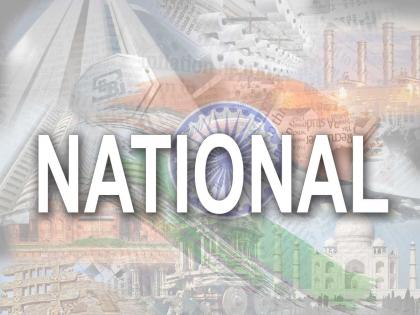Botulinum toxin caused bird mortality at Sambhar lake
By IANS | Published: November 22, 2019 01:36 PM2019-11-22T13:36:05+5:302019-11-22T15:15:04+5:30
The cause of mass casualties of birds at Sambhar lake in Rajasthan, a Ramsar site of international significance, was 'Botulinum' toxin which led to avian botulism, a report said.

Botulinum toxin caused bird mortality at Sambhar lake
All age group birds were affected and were found paralysed over wings and legs, showing neck-drooping syndrome.
"Omnivore and insectivore species were most affected," said the seven-page investigation report submitted on Thursday by the Indian Veterinary Research Institute (IVRI) on migratory birds at Sambhar.
The report came out when politic were engaged in a blame-game of a different scale, While Rajasthan Chief Minister Ashok Gehlot asked "why the State Wetland Authority remained dormant for years?", BJP state president Satish Poonia questioned the efforts of the state government which failed to check the deaths of avian fauna.
The report meanwhile is acknowledged as a curtain-drop over the avian tragedy that took a toll of over 17,000 birds in Sambhar lake and clearly says the birds that reached the centre of the lake survived but those at the edges died.
Owing to heavy rains on July 8, the lake became brimful with more water which reduced its salinity. However, when water evaporated and seeped into so far dry soil, prominently across the edges of this 180 sq km lake bed, it increased the salinity there.
Hence, at shores, increase in salinity caused death of feed of these birds which consumed crustaceans and plankton and preferred to be confined to the lake edges.
However, Greater Flamingos, lesser flamingos and other migratory birds, which remained at central areas of this lake, were not impacted by demise of micro-organisms, so they survived.
"What a contrast in this death scenario within the same lake and at a distance of just a few kilometers?" says renowned environmentalist Harsh Vardhan.
He further questions, "What has the Wildlife Institute of India to say on tests it was carrying out over carcasses at Sambhar? And how will Coimbatore-based SACON like to describe its findings? Why there are only a few scientific agencies across India to investigate wildlife mortality?"
"More vagaries stalk the country's wilderness management even though the Ministry of Environment & Forests shall be celebrating its 40th birthday soon," he comments adding that both government and non-government agencies have been shedding tears over this tragedy, questioning one another for delay in commencing rescue work and for examining birds, whether identifying species or giving them the first aid treatment.
Sambhar Salt Ltd is a public sector undertaking undertaking enjoying about 90 sq km area of this lake, it is under huge debt and was planning for a new system across the lake, a proposal rejected by the state government a few years ago. It now aims at tourism promotion as central government has already spent nearly Rs 60 crore on new infrastructure to facilitate this business, official sources said.
Has this company or numerous private salt manufacturers done anything for sustainable survival of the lake itself? No, none ever conceived about this geographical "playa" (dry lake) which is in chaotic state of affairs.
In fact, the lake has an old story of neglect.
Around 1600 AD, Emperor Akbar made salt worth Rs 2.5 lakh annually. His great grandson, Aurangzeb increased it to Rs 25 lakh per annum. The British appointed R.M. Adam as Salt Commissioner at Sambhar to accord a management system. However, he turned out to be an avid birder and created the first checklist of birds of this saline habitat. The state government took it over in 1950 but then again started the process of salt extraction to mint money.
A tall tale of neglect, said Harsh Vardhan.
( With inputs from IANS )
Open in app